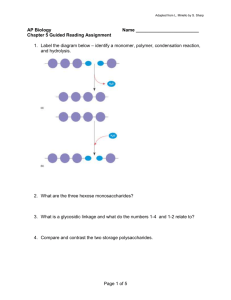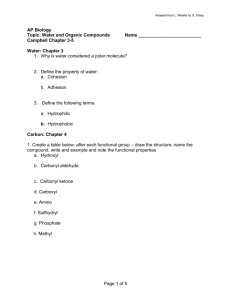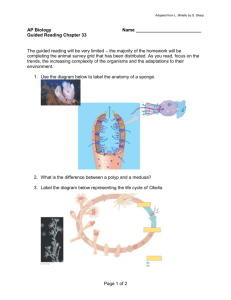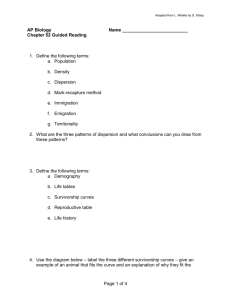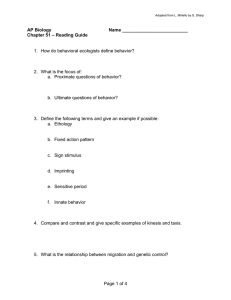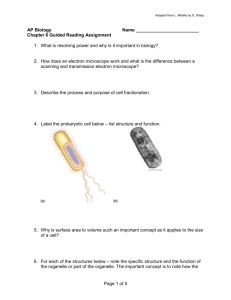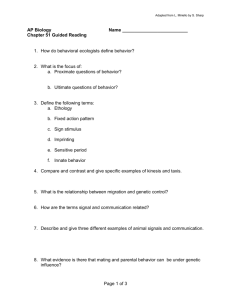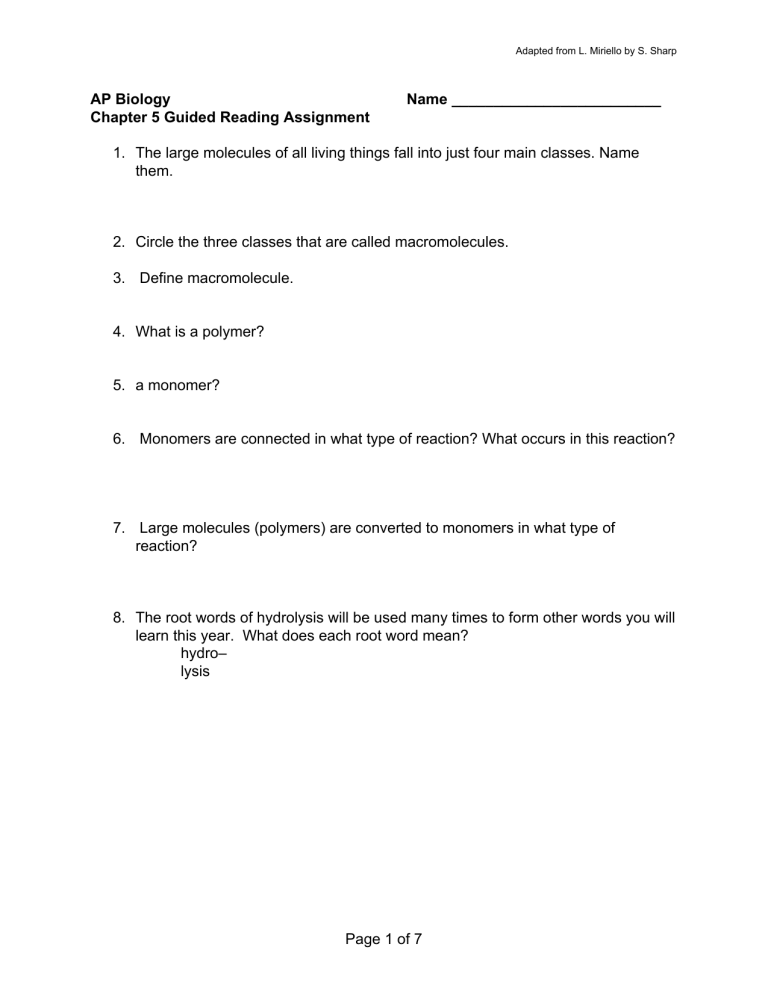
Adapted from L. Miriello by S. Sharp AP Biology Chapter 5 Guided Reading Assignment Name _________________________ 1. The large molecules of all living things fall into just four main classes. Name them. 2. Circle the three classes that are called macromolecules. 3. Define macromolecule. 4. What is a polymer? 5. a monomer? 6. Monomers are connected in what type of reaction? What occurs in this reaction? 7. Large molecules (polymers) are converted to monomers in what type of reaction? 8. The root words of hydrolysis will be used many times to form other words you will learn this year. What does each root word mean? hydro– lysis Page 1 of 7 Adapted from L. Miriello by S. Sharp 9. Label the diagram below – identify a monomer, polymer, condensation reaction, and hydrolysis. 10. What are the three hexose monosaccharides? 11. What is a glycosidic linkage and what do the numbers 1-4 and 1-2 relate to? 12. Compare and contrast the two storage polysaccharides. 13. Compare and contrast the two structural polysaccharides. Page 2 of 7 Adapted from L. Miriello by S. Sharp 14. Why are lipids grouped together? 15. What are the building blocks of fats? 16. Contrast saturated and unsaturated fats – how does this relate to the concept that structure and function are linked? 17. Label the molecule below. 18. H ow would you recognize a basic steroid molecule? Page 3 of 7 Adapted from L. Miriello by S. Sharp 19. List the eight types of proteins and their basic function. 20. What are the names for the monomers and polymers of proteins? 21. Label the diagram below concerning the catalytic cycle of an enzyme - 22. Draw two amino acids – note the amino group, the carboxyl group and the alpha carbon, circle the water molecule to be removed and then note the peptide bond formed when the two are joined. Page 4 of 7 Adapted from L. Miriello by S. Sharp 23. Study the figure. See if you can understand why some R groups are nonpolar, some polar, and others electrically charged (acidic or basic). If you were given an R group, could you place it in the correct group? Work on the R groups until you can see common elements in each category. Page 5 of 7 Adapted from L. Miriello by S. Sharp 24. Explain the four levels of protein structure – a. Primary b. Secondary c. Tertiary d. Quaternary 25. How does the characteristics of an amino acid – nonpolar, polar, acidic or basic relate to the issue of tertiary and quaternary structure? 26. What does denaturation mean and why is it important? 27. What are chaperonins and what is their role in protein structure? 28. Describe the technique of x-ray crystallography. 29. What are the roles of nucleic acids? Page 6 of 7 Adapted from L. Miriello by S. Sharp 30. Label the blank diagram below: 31. What is meant by the term that DNA is antiparallel? Page 7 of 7
